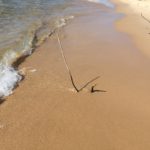31 Aug A Clockwork Green: Ecomedia in the Anthropocene
A Clockwork Green: Ecomedia in the Anthropocene
A Nearly Carbon Neutral Virtual Symposium
Sponsored by the Association for the Study of Literature and Environment
and the University of California, Santa Barbara
June 14-30, 2018
CFP online: https://christymtidwell.wordpress.com/2017/07/12/cfp-a-clockwork-green-ecomedia-in-the-anthropocene/
A troubling paradox lies at the heart of ecomedia studies: those of us who study and teach about the intersection of ecological issues and non-print media also recognize that the production, consumption, and circulation of media texts take a massive toll on the Earth’s environment, an issue well documented by media scholars. In other words, as ecomedia scholars and environmental filmmakers, we must admit that our own media production, consumption, and research practices — which are felt disproportionately across communities and cultures — make us complicit in the ever-escalating global environmental crisis. Yet if we are to better understand the vital role that film and media play in reflecting, responding to, and shaping public attitudes about the relationships between the human and non-human worlds, as well as different human communities, we must embrace this paradox. In this first-ever ASLE online symposium, we will collectively situate and define ecomedia studies and its relationship to environmental humanities, film and media studies, and cultural studies through a series of virtual presentations and conversations. While ecomedia will be our buzzword for the event, proposals on all aspects of environmental criticism are welcome.
In a May 2014 interview, deep-green activist Dan Bloom — arguably the first to use the term cli-fi for climate fiction and film — asserts, “I believe that cli fi novels and movies can serve to wake up readers and viewers to the reality of the Climapocalypse that awaits humankind if we do nothing to stop it” (Vemuri). Bloom’s claims echo those of Rahman Badalov, who declares of the Lumiere Brothers’ Oil Wells of Baku, “Blazing oil gushers make marvelous cinematographic material…. Only cinema can capture the thick oil bursting forth like a fiery monster.” But Badalov not only views these oil gushers as monstrous nature; he also notes the dual message of the view: to both condemn environmental degradation and entertain with spectacle. Perhaps acknowledging this dual message is a way of “dwelling in the dissolve” or “performing exposure,” as Stacy Alaimo puts it. Alaimo asserts “performing exposure as an ethical and political act means to reckon with — rather than disavow — such horrific events and to grapple with the particular entanglements of vulnerability and complicity that radiate from disasters and their terribly disjunctive connection to everyday life in the industrialized world.” Environmental justice issues of gender, race, ability, class, and ethnicity are invariably exposed as part and parcel of the material networks of media. In the provocative essay “Ecocriticism and Ideology: Do Ecocritics Dream of a Clockwork Green?”, Andrew Hageman calls for “a practice of dialectical critique to read films for what they reveal to us about the contradictions within the culture, society, and ourselves that we readily recognize in such films.” We invite you to answer that call by examining any text or context broadly related to our symposium and join us for what we hope to be a unique, timely, and thoroughly enjoyable digital event.
Hageman asks, “What can film, given its ideological constraints, do to advance ecological knowledge, attitudes, and behavior?” In your presentations, we invite you to consider this and other questions, such as the following:
● How is ecomedia deployed by communities at the margins of traditional media practice and at the frontlines of environmental disaster?
● How are mainstream econarratives of gender, sexuality, race, etc. resisted and re-inscribed?
● How does the material impact of ecomedia (film, television, gaming, etc.) undermine or emphasize its message?
● How can ecomedia be useful in persuading resistant audiences?
● What strategies have worked (or not worked) in teaching ecomedia?
● What impact have comics, gaming, habitat dioramas, and other forms of ecomedia had on the field?
● What broad definitions of ecomedia can account for the wide range of forms it entails (more than just cinematic)?
● What broad definitions of ecomedia can account for a wide range of ecological alternatives, ideologies, or perspectives?
● How does ecohorror inform our understanding of ecomedia in this era of climapocalypse?
● How can re-reading historical ecomedia inform our understanding of past and/or current cultural climate?
● What cinematic strategies and practices best reflect various ecological ideologies?
● Can or should the focus be shifted away from the human in ecomedia?
Though the focus of the conference is ecomedia, ASLE and ASLE affiliate members will be welcome to present on a range of topics. We also encourage U.S. and international filmmakers and scholars to participate and encourage participants to meet together through local viewing/discussion groups on their home campuses.
Beyond a drastically lower carbon footprint, the nearly carbon neutral conference approach also is more inclusive of international scholars who may have funding or travel issues for a U.S.-based conference, is more inclusive of differently abled scholars who may have difficulty with physical accessibility and who may need closed captioning and/or audio screen readers, is open access after the conference window, can be used in classrooms, and has been proven to elicit more discussion than a traditional conference format. The conference is formatted as follows:
● Speakers record their own talks. This is typically A) a video of them speaking, generally filmed with a webcam or smartphone, B) a screen recording of a presentation, such as a PowerPoint, or C) a hybrid of the two, with speaker and presentation alternately or simultaneously onscreen.
● Talks are uploaded to the conference website where they can be viewed at any time during the conference timeframe.
● Talks are organized into panels (i.e. individual web pages) that generally have three speakers each and a shared Q&A session.
● Participants and panelists contribute to online Q&A sessions, which are similar to online forums, by posing and responding to written questions and comments.
We eagerly welcome international submissions, but please keep in mind the presentations should be in English or subtitled in English, and the Q&A will be in English. Also, please note that all talks will become part of a permanent conference archive open to the public.
Please submit abstracts of 300 words by December 1 to Christy Tidwell (christy.tidwell@gmail.com). Contact Christy Tidwell with questions about submissions and Bridgitte Barclay (bbarclay@aurora.edu) and/or Shannon Davies Mancus (shannonmancus@gmail.com) with questions about the conference more broadly.




No Comments